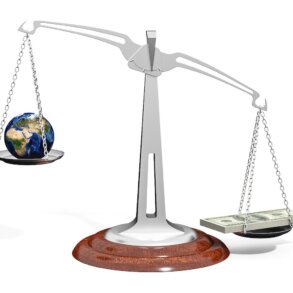By Tom Atlee and originally published at Random Communications from an Evolutionary Edge
Increasingly, networks that embrace diverse sectors and stakeholders are working together on shared issues and goals at all levels of society. They are having real impact on the ground all over the world. While the nature of their relationship to We the People is unclear and evolving, it is clear that they are an emerging form of actual governance. How can we enhance their functionality, wisdom, and benign impact on how we organize our collective affairs and determine our collective destiny?
About six months ago I was introduced to a deeply remarkable development, and it’s even more profound implications, by two people who didn’t know each other and with whom I’ve talked in depth almost every week since.
This development electrifies me. I have long felt that achieving effective, inclusive, and decentralized governance would require a major, perhaps insurmountable effort.
However, these two folks have opened my eyes to an unexpected form of such governance, manifesting right now all around the world.
What is this emerging, inclusive and decentralized form of governance?
Complex Inclusive Networks as Governance
These new friends pointed out a rapidly increasing activity of networks that embrace
- multiple sectors (public sector, private sector, and civil society) …
- multiple stakeholders (diverse parties involved in various issues and systems) … and
- multiple scales (ranging from local to global).
They shared their thrill at seeing this complex activity emerging as a new form of whole-system engagement and governance that could transcend Government as we’ve come to know it. (See the examples and analyses referenced at the end of this article.)
My companions in this new inquiry and sense of possibility are Tracy Kunkler and Steve Waddell. Both work with stakeholder networks oriented towards transformation. Tracy, mostly with local and regional systems, Steve, at all levels, including global networks self-organizing around the UN’s Sustainable Development Goals.
Some Big Questions for the Big Picture
Last month, at the Frontiers of Democracy conference in Boston, Steve, Tracy and I presented a session entitled “How Do We Midwife the Emergence of Wise Governance Networks?”
Our session description asked a few additional questions:
- Are you sensing new patterns of societal governance in multi-sector networks?
- Are they more diverse and adaptive to the scale and pace of change than governments?
- Might they become powerful governance structures, growing to include government, but also transcending it?
- How can we influence the emergence of these to be democratic, powerful, and wise?
Note that by “governance” we don’t mean GovernMENT (although that’s part of it). Instead, we mean All the things groups, organizations and institutions do to shape what happens on the ground to deal with societal issues and goals and how our collective lives unfold.
Of course, when we look at what GovernMENTs do, they impact these areas too. So do businesses and civil society groups. When a network involves players from the public sector, the private sector, and civil society, we are talking about a multi-sector network.
If we look at issues (like poverty, human rights, or climate change) or at social systems (like food, health care, or educational systems), we find that groups across the spectrum of roles and perspectives are trying to work together to have a shared impact on the issue or system they’re part of. In these cases, we are talking about multi-stakeholder networks.
If any of these include players at different levels of functioning—local, state, regional, national, international, global, etc. then we are talking about multi-scale networks.
These are not so much networks of individuals as networks of groups, organizations, and institutions. When they begin to weave together into multi-sector, multi-stakeholder, multi-scale (MS3) networks, then they become increasingly inclusive. Often they ask, “Who else should be part of this work, or this conversation?”
With true inclusiveness, the level and texture of impact they have—and could have—begins to boggle my mind.
They present the possibility of millions of committed eyes, ears, heads, hands, and hearts working together on the ground in every aspect of any given issue or system. (If you are concerned about the possible totalitarian implications of this, please see my asterisked* note below.)
And If they are working together effectively, addressing concerns, developing shared goals and standards and seeing beyond narrowly framed interests, then what we have is a new level of whole-system governance of, by, and for the whole systems. By being part of groups who are part of these networks, whoever is involved in a collective challenge or vision can be engaged in addressing it. A tremendous amount of competence, passion, and knowledge can be tapped for positive evolution in that realm—indeed, in all realms.
At least that’s the vision I glimpsed. It hooked me.
Providing a Key Missing Ingredient
When we asked the attendees at our workshop what they were experiencing in their networks, they told us that the unprecedented diversity of the participants was showing up as a real problem. These networks included people from different cultures and worldviews (think governments, businesses, and non-profits), different sides of various issues, different constituencies, and so on. This was in addition to different demographics, experiences, organizational styles, and more….
I realized that many people in the networks that I’m connected to—facilitators, mediators, organizational consultants, process designers, conveners, community organizers, and so on—have tremendous know-how that can help people work creatively across their differences.
(Much of this expertise is reflected in the wise democracy pattern language, most notably in the pattern “Using Diversity and Disturbance Creatively” but actually throughout the pattern language.)
People with these skills form a professional category. They specialize in helping others with different perspectives to work together effectively. I realized that these professionals are a vital ingredient for the successful emergence of these new whole-system forms of governance. The need for a professional in this role needs to be acknowledged and recognised for these new forms to unfold.
What about Wise democracy?
Talking about this as a new form of governance raises many questions: where do ‘We the People’ feature in all of this—where do we, the citizens … we, the communities fit? What is our role and our power? Where exactly do we—or should we—fit into this new governance picture? What public answerability should stakeholder networks have—and vice versa? Should citizen deliberative councils play a major role in focusing the goals of stakeholder networks or reviewing their activities? Might crowdsourcing solutions or priorities engage the public in issues being addressed by stakeholder networks that require whole-community involvement? (Note that Citizen/Stakeholder Balance was part of the wise democracy pattern language long before I met Tracy and Steve.)
This focus on stakeholder networks also raises for me, the question of how we can increase the likelihood that the results of such coordinated whole-system activities are wise.
To what extent will these networks take into account what needs to be taken into account for the long-term broad benefit?
How can we ensure that oft-overlooked sources of wisdom get included in stakeholder network deliberations?
I’ve been asking such questions for years as my “wise democracy” vision has developed. I have some thoughts about possible answers, but those thoughts are barely a beginning. Fortunately, people like Tracy and Steve also find these questions compelling. They realize their importance if this emerging ‘governance-through-inclusive-networks phenomenon’ is going to end up being an actual long-term blessing.
Two Important Pieces of Wisdom
There are two big-picture insights about these questions that can help guide our thinking.
- First, the diversity and scope of the people and groups involved—If they are truly inclusive and successfully working together—automatically means that a wide range of perspectives, experiences, interests, needs, and information will be taken into account. It is only by including people with these differing views and taking them seriously that those in these diverse networks will be able to function well together. In doing so, they will inherently be taking into account much of what needs to be taken into account. Because of the diversity of concerns and needs considered, these networks will almost certainly understand “what’s needed for long-term broad benefit”, thereby moving us a long way towards collective wisdom.
- Second, advocates of deliberative democracy have pointed out complementary roles for citizens and stakeholders who function as experts, as embodied in the formula, Experts should be on tap, not on top. This formulation is supported by cognitive science that recognizes that facts and reason cannot themselves lead to a decision. They can provide us with much understanding of what is going on in a situation, but in order to make a decision we have to WANT something—which necessarily involves our desires, feelings, values, and needs. Although these can be defended by reason, they can’t be derived solely through reason; they are fundamental.
- So, in a democracy, it is the people’s needs and dreams, the community’s values, the common interest that should properly guide decision-making, not experts. Yes,We the people need the advice of experts like stakeholders and researchers to help us understand the actual conditions and dynamics of life well enough to satisfy our needs and manifest our values in the complexity of the real world. However, we are the ultimate experts regarding our needs, our values, our longings, and our everyday experience.
There is the potential for effective wisdom to emerge from the dense diversity and broad reach of inclusive stakeholder networks and the kind collective wisdom about which the wise democracy pattern language offers so much guidance.
The inquiry into this prospect, and the work to raise our awareness of it, have just begun. I’d like to invite you consider these ideas. What are your thoughts? What do you think should be attended to and done? What role(s) might you play? Please let me know.
Coheartedly,
Tom
* Networks for surveillance and control are necessarily top-down. What I am talking about here are self-organizing networks of diverse groups and organizations trying to work together. They are not networks of individual agents working at the street level for centralized power. Multi-sector, multi-stakeholder, multi-scale networks are complex, multi-faceted systems that do not lend themselves to oppressive control or co-optation by central authorities, although attention is warranted to ensure that remains true as network governance evolves.
References for Exploring Emerging Inclusive Networks as Governance
Metagovernance of Governance Networks
Multi-Stakeholder Initiative Database
New York’s Juvenile Justice System
“Global Governance Enterprises: Creating Multisector Collaborations” (2016)
“Multi-stakeholder Processes for Governance and Sustainability: Beyond Deadlock and Conflict” (2002)




